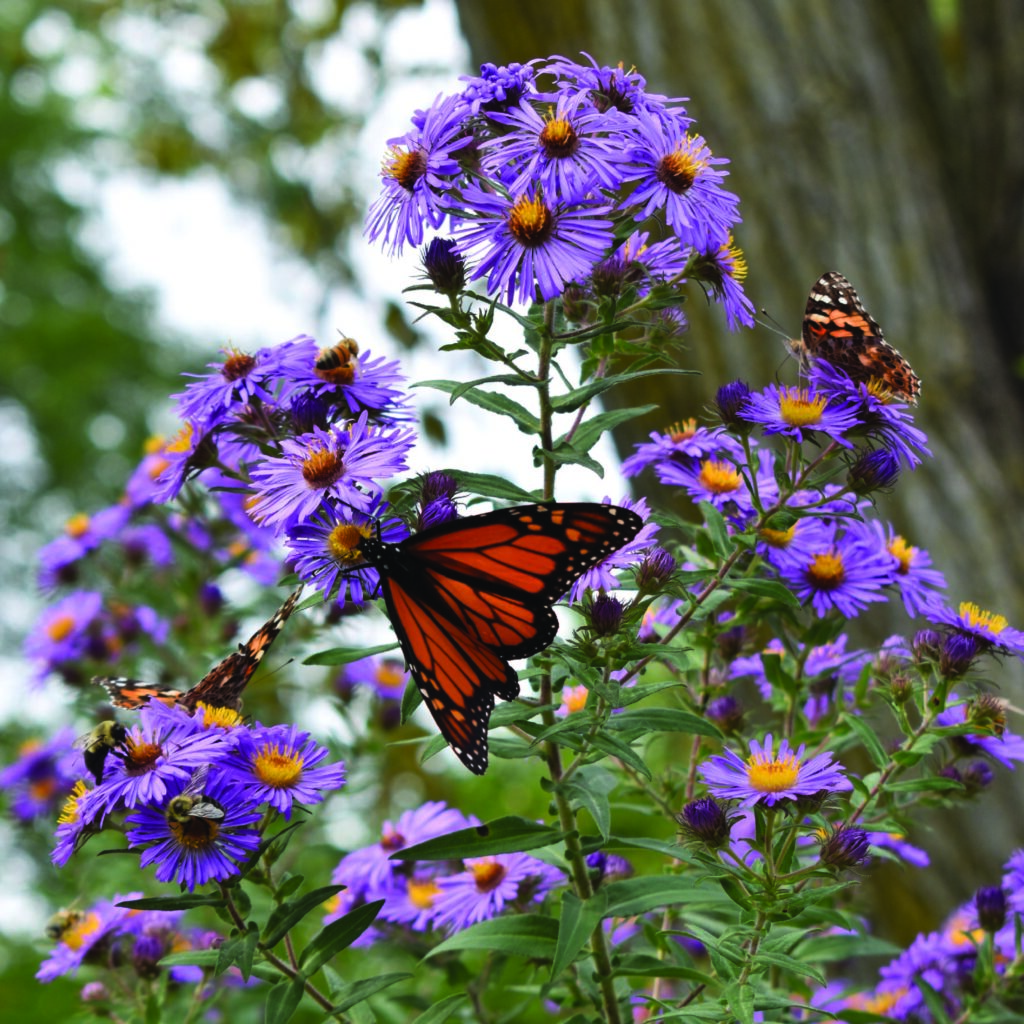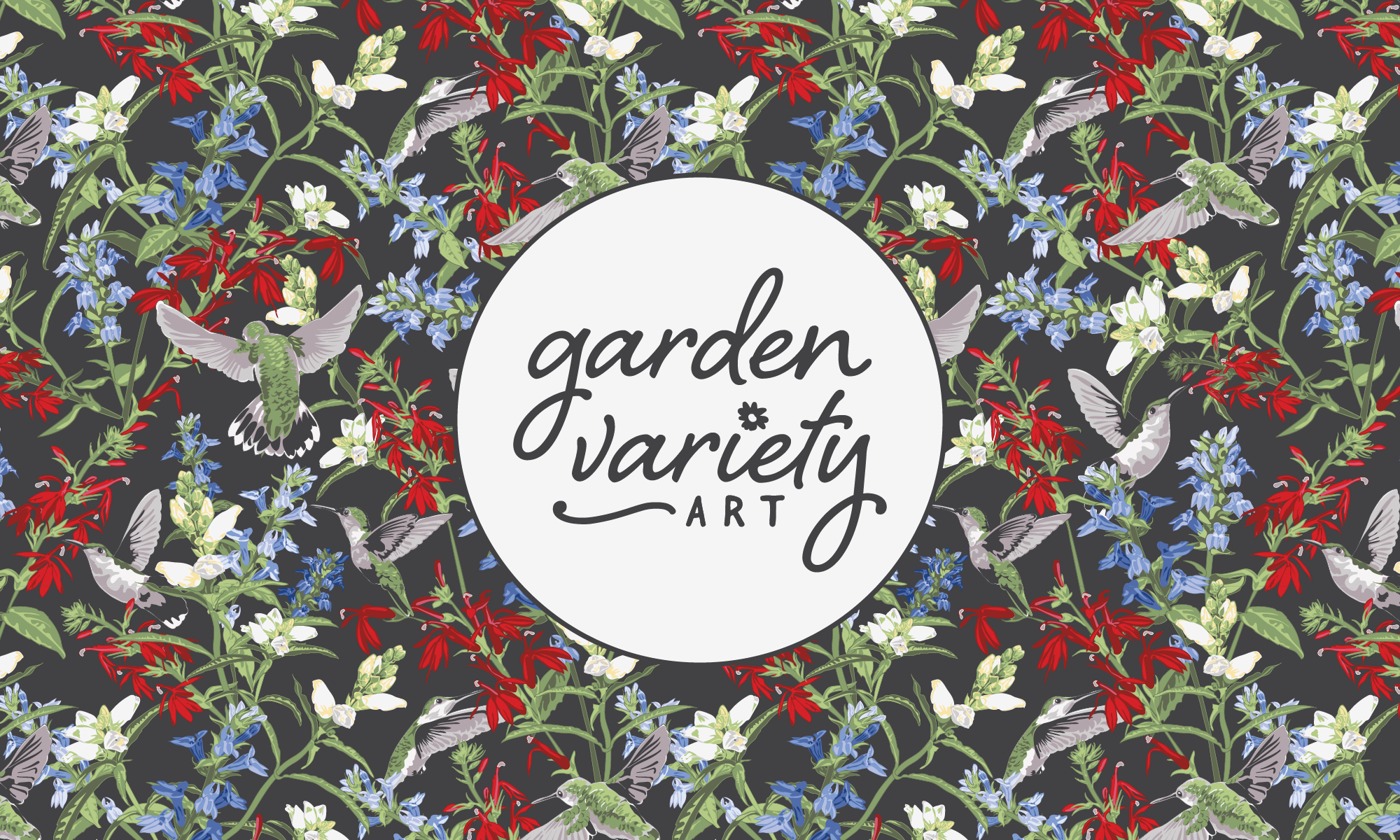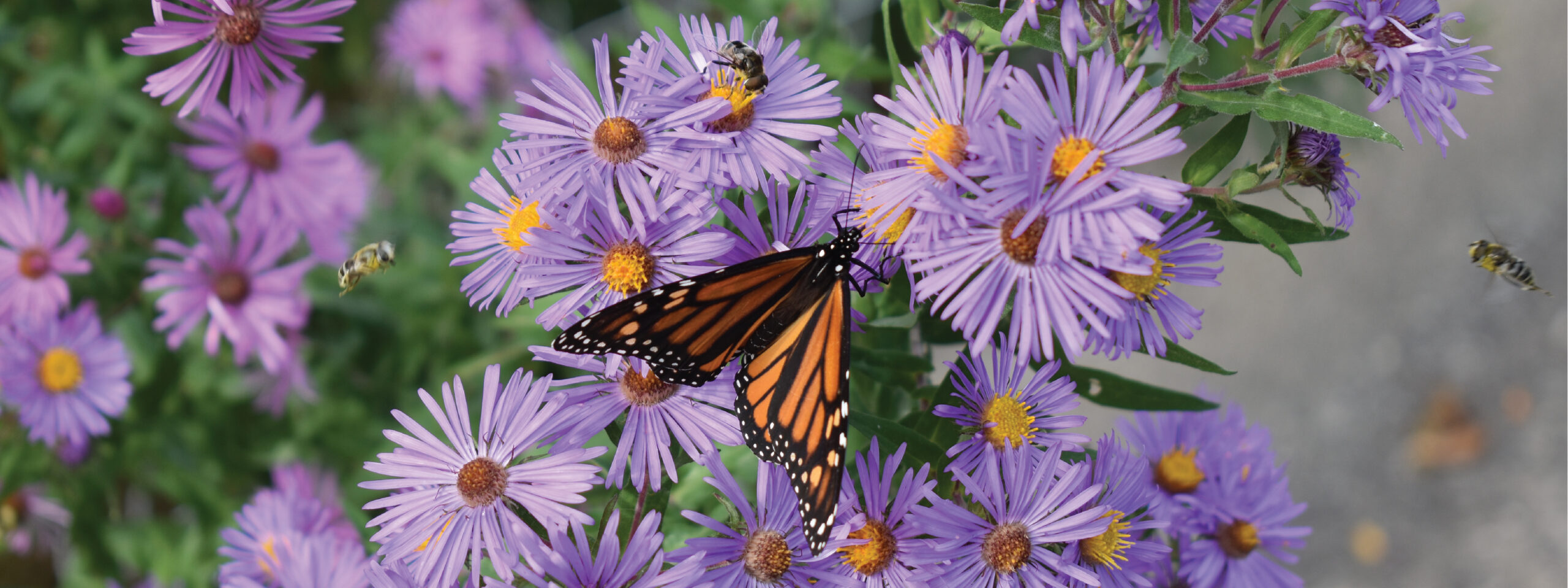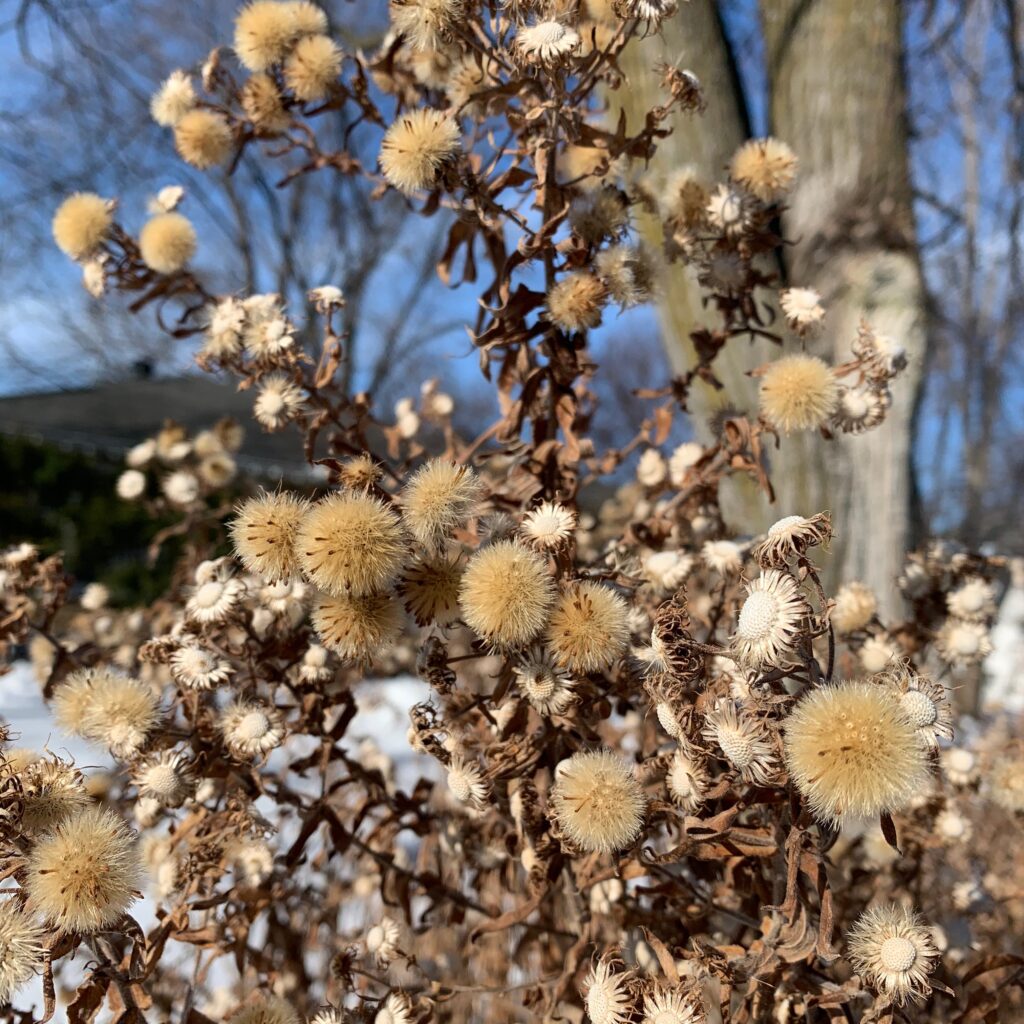Hello!
I launched this site on Groundhog Day, but it took a few more days for the sun to come out in my snow-covered patch of Minnesota. (This blog’s author is solar powered;) Phil predicts an early spring, but it feels like we’re still in the heart of winter here.
As I took a balmy 15 degree morning walk I was delighted by the strong stems of New England Aster towering several feet above snow piled at the curb. Seed heads — some bare, some still full and fluffy — stood out among curled dry leaves. Between the wind, snow and birds coming to feast, most of the remaining seeds will be dispersed before the spring thaw, followed by a bounty of new New England Asters coming up all around. Some can stay where they plant themselves, some moved to other spots in the yard, and the rest shared with friends and neighbors. Each plant is a piece of potential habitat.
There is perhaps no better wildflower to illustrate the ethos of my website and business —— Garden Variety Art. The name is meant to convey both the everyday and biodiversity. The more commonplace we make native plant communities, the greater variety of wildlife we support, and the closer we are to it!

EVERYDAY NATURE
Nature doesn’t have to be something pristine and distant that we only visit on occasion. There are many ways we can invite it into everyday home spaces, such as planting wildlife habitat in our back (and front!) yards. New England Aster (Symphyotrichum novae-angliae) is one of those beautiful and useful wildflowers that is also incredibly easy to grow. While preferring moist fields and meadows, this native species thrives, lush and prolific, even in my sandy soil. It is well worth the wait until its multitude of early autumn blooms burst open into voluminous clouds of purple and gold. And I’m not the only one waiting every year with great anticipation for the show…

CULTIVATING BIODIVERSITY
A garden is not natural. It is a cultural practice, something we design and (try to) control. However, we can certainly garden in ways that are more supportive of the nature living all around us. Adding New England Aster to your garden nourishes a wide range of butterflies, native bees and beneficial insects at a time when other nectar and pollen source plants have closed their proverbial doors for the season. Even past bloom it continues to provide food and shelter for wildlife. Mixed with other native plants that bloom throughout the growing season, this invaluable species can play a vital part in replenishing and reconnecting habitat in your neighborhood.
As I stand in awe of the tall New England Aster stalks I also eagerly await the dozen or so species that lie dormant beneath the snow —— from Prairie Smoke that will greet Bumble Bee queens in spring, to mid-summer blooms of Purple Coneflower drawing a myriad of bees and butterflies, and even a few birds, to the bright orange buds on Butterflyweed whose leaves feed Monarch Caterpillars all season long. Each will flower, fade and go to seed before the aster buffet begins. Variety really is the spice of life!
Every day outside is an opportunity to observe and enjoy the space we make for nature, and our place in it. Exploration doesn’t require long treks far from home. We can discover (and create!) whole new worlds if we only pay attention to what is happening at our feet. In future posts I’ll share what I learn along the way while taking snapshots and making art focused on these ‘garden variety’ interactions. Thank you for visiting!


